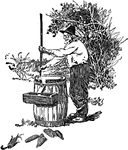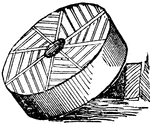Gristmills
The Gristmills ClipArt gallery includes 17 illustrations of mills and equipment used to grind grain into flour.

Portable Engine
"A portable engine and feed grinder that saves frequent trips to the Grist Mill."—The Federal Digest,…

Grinding with a Handmill
"Grinding with a hand-mill in the fourteenth century, as pictured in an old manuscript."—Gordy, 1912
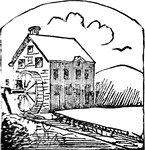
Mill
The building with its machinery, where grinding or some process of manufacturing is carried on.

Barker's Mill
"Grain enters the mill at H down into D and into tube A. The grain passes down through the holes B and…

Bed Pan Grinding Mill
A grinding mill is a unit operation designed to break a solid material into smaller pieces. The grinding…

Floating Flour Mill
A mill which grounds grain into flour. This flour mill is located on a body of water.
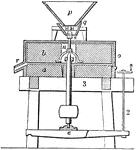
Grinding Mill
A grinding mill is a unit operation designed to break a solid material into smaller pieces. There are…

Grinding Mill
A grinding mill is a unit operation designed to break a solid material into smaller pieces. There are…

Modern Flour Mill
This illustration shows a cross-section of a modern flour mill. Wheat is received in bin a, and first…
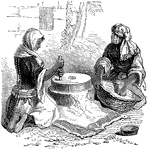
Using A Mortar
Women grinding grain in a mortar. The hole for receiving the grain was in the center of the upper millstone,…

Quern
"A primitive mill for grinding corn, the stone of which was turned by the hand before the invention…
